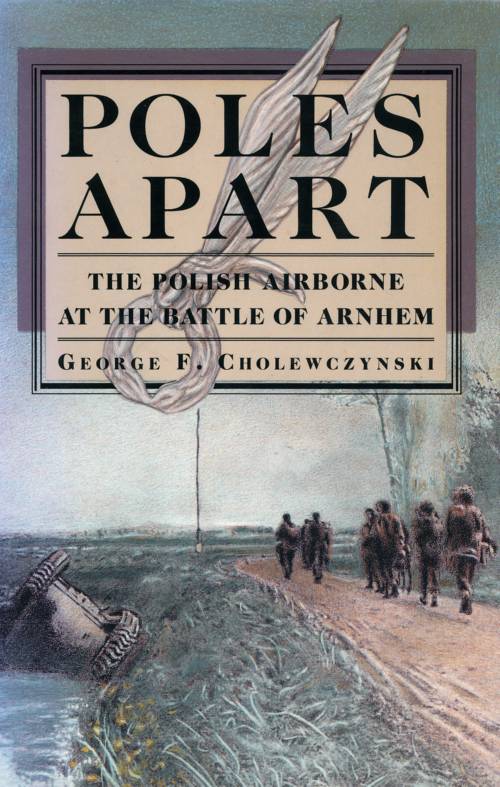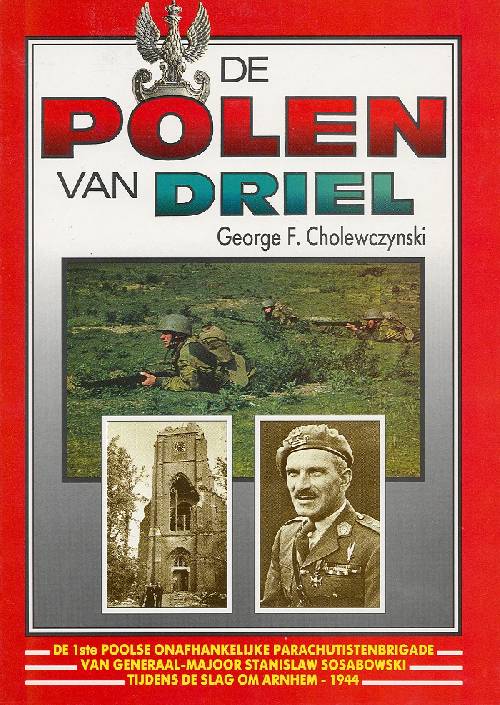1st Polish Independent Parachute Brigade
This sum up was written by George F. Cholewczynski, an American-Polish author of two books about the Brigade :

Poles Apart : ISBN 1-85367-165-7 in english

De polen Van Driel : ISBN 90-71743-10-1
After the crushing 1939 invasions by Hitler's Germany and Stalin's Russia, a Polish Government in Exile was establishing in France by General Wladyslaw Sikorski. After France was defeated, the government in exile and its armed forces were evacuated to Great Britain. As the Polish forces reorganized, Colonel Stanislaw Sosabowski was given command of the 4th Cadre Rifle Brigade, based in Leven, Scotland. Sosabowski took advantage of an option to send 20 of his officers to the parachute school at Ringway, where some of the instructors from the pre-war parachute in Poland were already at work.
The Polish government in exile had seen the parachute as a way of maintaining contact with the underground army in Poland, and Colonel Sosabowski had taken steps to provide preliminary parachute training at his base in Leven, Scotland. His brigade was chosen to provide preliminary training for the candidate parachutists. The concept of parachute trained clandestine soldiers was expanded when it was decided to raise an entire brigade group to support eh inevitable uprising in Poland by the underground forces. On September 23, 1941, the 1st Polish Independent Parachute Brigade officially came into being.
The Parachute Brigade was structured as a Brigade Group, having signals, medical, supply and both regular artillery and anti-tank artillery units in addition to the normal three parachute infantry battalions.
It was originally stipulated that the Parachute Brigade would be the only unit of the Polish Forces in Exile to be under direct command of the Polish Government for the purpose of deployment to Poland when needed. In the spring of 1944 General Montgomery agitated to have the brigade put under his command for the coming invasion of Europe. The Polish government resisted, but eventually succumbed to the pressure. In June 1944, the 1st Independent Parachute Brigade moved to the English Midlands from Scotland to prepare for operations under British command. At this point it numbered 266 officers and 2,300 men.
While training, the long awaited Uprising broke out in Warsaw. The soldiers of the Polish Parachute Brigade, raised specifically for the event were crushed and extremely disappointed that they could not come to the aid of their countrymen after almost five years of brutal occupation. At the same time, the unit was put under command of the British 1st Airborne Division.
During September the Polish Parachute Brigade was given orders for several operations that were cancelled. On September 14, 1944, the Brigade received orders for Operation MARKET GARDEN, where the British 1st Airborne Division with the Poles attached, and two US airborne divisions would conduct an airborne assault to seize bridges in Holland. During the orders sessions General Sosabowski objected to many details of the plans, and made himself unpopular with the British high command.
Except for advance parties, the Polish Parachute Brigade was to enter the battle on the third day of the operation. The brigade's gliders were to land on the north bank of the Neder Rijn River, while the 114 planes of the US 9th Troop Carrier were to drop the parachute element south of the river.
The operation was running into serious difficulties by the second day, unable to open the bridge over the river, and became tightly bottled up in the village of Oosterbeek. On September 19th, 1944, the third day of the operation, the parachute element was unable to take off due to the weather. The glider lift, carrying the Polish Parachute Brigade's heavy equipment and artillery managed to take off, and was massacred on the landing zone.
The parachute element was unable to take off for another two nerve-wracking days while the situation in Oosterbeek became more and more critical. Finally, on September 21st, the parachute element took off and landed under heavy fire near the village of Driel, across the river from Oosterbeek. While sorting itself out, they discovered that 53 aircraft had returned to base because of the weather with the entire 1st Battalion and parts of the 3rd Battalion. The under strength troops were unable to cross the river, and dug in around Driel.
The following morning the Germans mounted strong attacks, supported by armor, but the Polish paratroopers managed to hold. That night they managed to get some 40-men across the river to Oosterbeek in small rubber boats. The following night the Allied ground forces managed to bring up canvas and plywood assault boats to the Polish Parachute Brigade. During the night of September 24th, some 150 men of the 3rd Battalion managed to cross over to Oosterbeek, under heavy fire and taking heavy casualties. The siege went on for another day and night until the bristish paratroopers withdrew, with the Polish paratroopers in Oosterbeek acting as a rear guard. By the time the Polish Parachute Brigade returned to England in October, it had suffered 24% casualties.
Another casualty was general Sosabowski. he was used as a scapegoat, and lost command of the brigade that he had so lovingly raised. Under the command of Colonel Szerbo-Rawicz, it was send to the continent just as the war ending. it spent another two years as an occupation unit in Germany, where it took care of many Polish refugees and Displaced persons. In 1989, the parachute brigade in poland renamed in honor of General Sosabowski. June 2001.